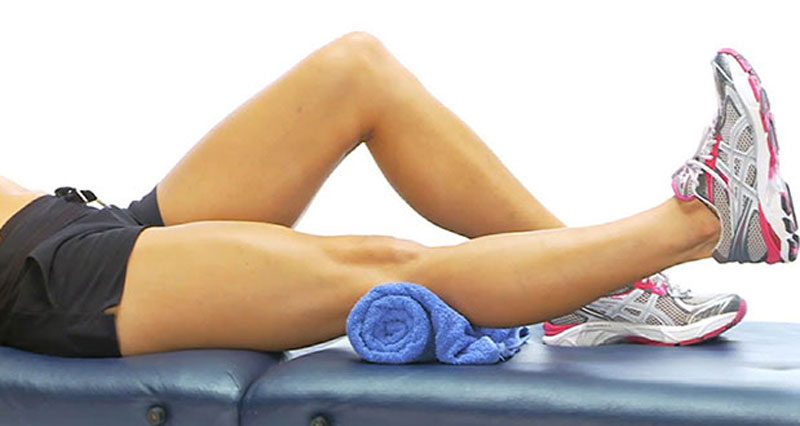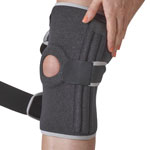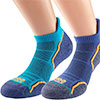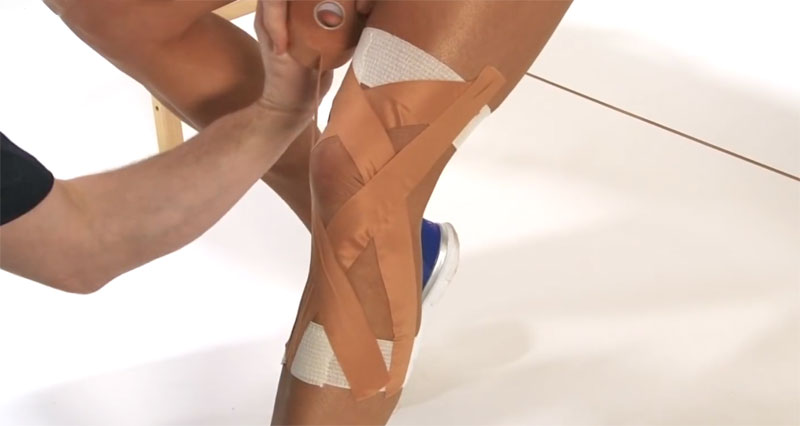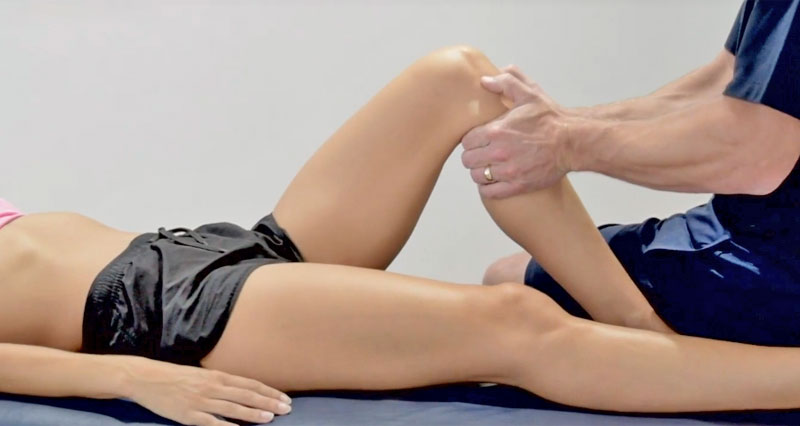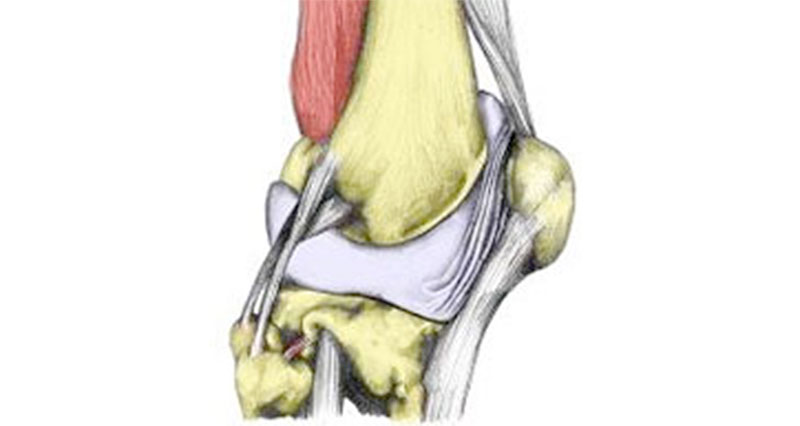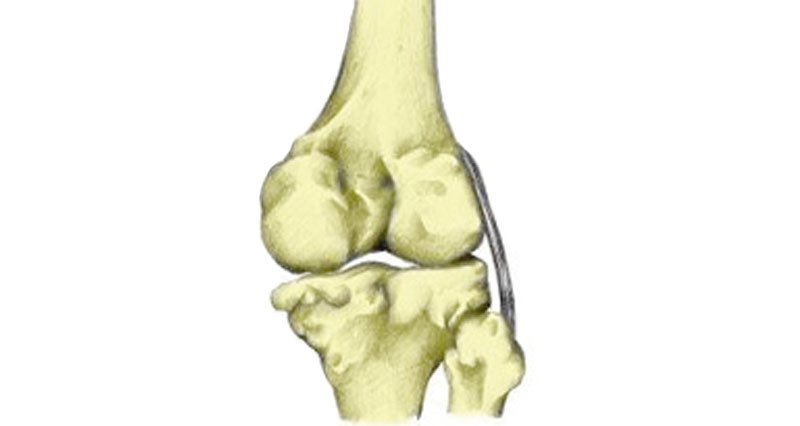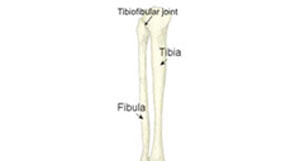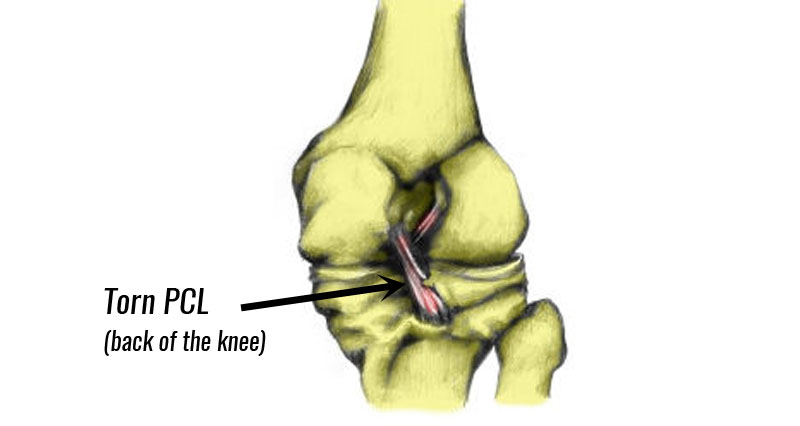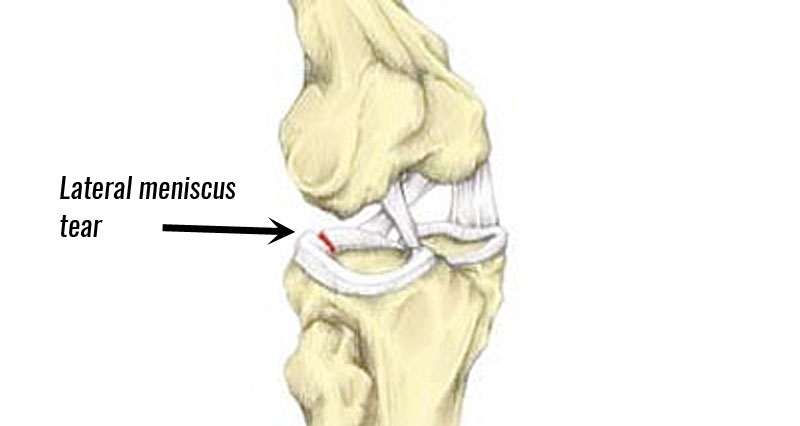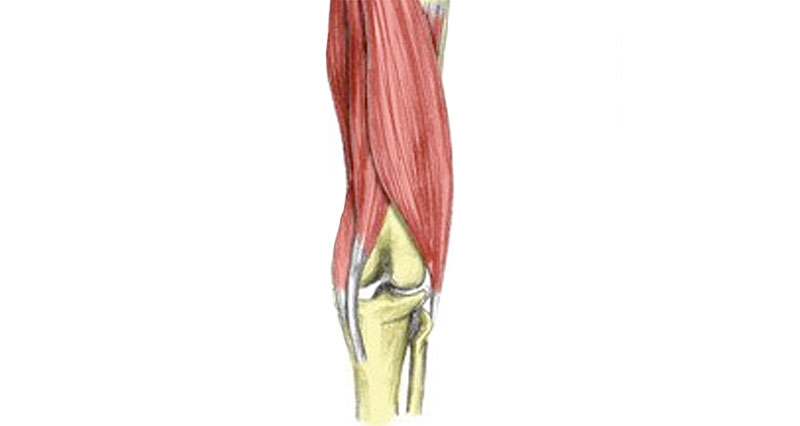A PCL sprain is a tear of the posterior cruciate ligament. Our PCL sprain rehabilitation exercises include mobility, stretching, and strengthening exercises.
The following guidelines for rehabilitation of a posterior cruciate ligament injury are for information purposes only. We recommend seeking professional advice before undertaking any rehabilitation program.
When might surgery be required?
Surgery for a ruptured posterior cruciate ligament is often required when other structures in the knee are also damaged. For example, the anterior cruciate ligament, medial collateral ligament, or lateral ligament sprains.
Also, if you have rotational laxity in your knee. This means your lower leg twists more than normal in relation to the upper leg (femur).
Torn PCL rehabilitation program
Phase 1: Immediately following injury
Aims – To control swelling, maintain the ability to straighten and bend the leg, and begin strengthening exercises for the leg muscles when possible.
Duration – 2 weeks.
Rest from aggravating activities. Use crutches if necessary. Complete rest for the first 48 hours, after that, let pain be the guide to the speed of progression of rehabilitation.
Apply cold therapy and compression as soon as possible following injury and for 15 minutes every 2 hours for the next 24 to 48 hours.
The frequency of application can be gradually reduced over the next few days to no less than 3 times a day and always after mobility or strengthening exercises.
Stretching exercises for the lower leg and upper body. Calf stretches, hamstring stretches, ankle mobility, and pain-free knee mobility exercises. If it hurts, do not do it.
Strengthening exercises (pain-free) – static quads, static hamstring holds, calf raises (both legs). After week 1, the athlete may be able to maintain aerobic fitness with stationary cycling. By the end of week 2, the athlete should aim to be walking normally without aids.
Phase 2: After week 2
Aims – To completely eliminate swelling, regain full mobility, and build on strengthening exercises. By the end of this phase, the athlete may be able to do ‘proper’ cycling or light swimming.
Duration – 2 weeks.
Apply cold therapy and compression 3 times a day until swelling is eliminated. Once this is achieved, apply cold after every training session.
Mobility exercises – continue to work on these if full mobility has not been achieved. Otherwise, progress onto more usual stretching exercises as long as they do not cause pain in the knee.
Strengthening exercises – continue with phase 1 exercises and also begin to include standing static quads (instead of sitting), half squats (both legs), hip raises, hip exercises against resistance, step-ups and single-leg calf raises.
Phase 3: After week 4
Aims – To regain full strength and begin to return to sports-specific training.
Duration – 2 weeks.
Apply cold therapy and compression following training sessions for 15 to 20 minutes to help prevent swelling from returning.
Stretching exercises for calf muscles, hamstrings, quadriceps, adductors, and abductors.
Progress strength exercises from phase 2 by increasing resistance and moving from double-leg exercises to single-leg exercises. Plyometric exercises (hopping and bounding may be possible during this stage).
Begin a gradual return to running. Once the athlete can run for 20 to 30 minutes without any problems then speedwork can be gradually introduced. Start at 50% of maximum speed and increase each session to 90% of maximum speed.
Include backward and sideways running drills as well as quick changes of direction.
Phase 4: After week 6
Aims – To return to sports-specific training and competition.
Duration 2 weeks.
- Cold therapy and compression should not be required during this stage. If there is still swelling on the knee it may be necessary to go back a stage or two.
- Full sports-specific flexibility training should be done through regular stretching before and after training sessions, on a daily basis.
- Sports massage techniques to the surrounding muscles will help recovery after training and keep muscles in better condition.
- Sprinting speed should now be near normal and the athlete able to change direction at speed and perform other sports-specific tasks without pain or unease. Normal sports-specific training should now be resumed.
- When the athlete is confident they should be returned to sport in a limited capacity, for example, a footballer may play only 20 minutes of a game. This will gradually introduce them to the demands of competition both physically and psychologically.
Torn PCL exercises – mobility
Basic mobility exercises that may be used as part of a rehab program for a posterior cruciate ligament injury.
Knee flexion – heel slides
- Lie on your back and bend the knee ensuring the foot stays in contact with the floor. Repeat 10 to 20 times.
- Slight discomfort may be felt but not pain.
- This can be developed to increase range of movement if needed by using a towel or similar to pull on the leg further than it would normally go.
Calf stretch
- Keep the heel of the back leg on the ground and gently push forward.
- This will stretch the large Gastrocnemius muscle which attaches above the knee.
- You can hold this stretch for at least 20 seconds and repeat it 3 times.
- This set of stretching can be done three times a day – more as long as it does not hurt.
- Some therapists recommend holding stretches for up to 40 seconds or more.
Straight leg hamstring stretch
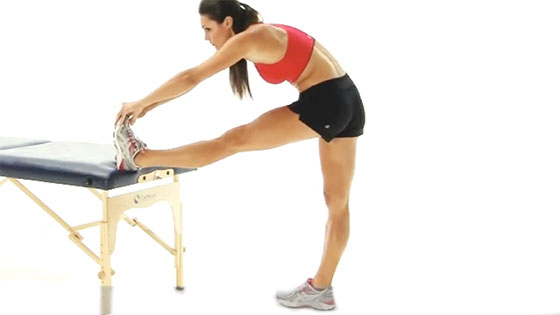
The aim here is to get a little bit of elasticity to the healing tissue, not increase flexibility. This stretch can also be done sitting down.
- Place your foot on a table or similar and lean into the stretch, keeping your leg straight and chest up.
- Take the stretch as far as is comfortable and hold relaxing into the stretch. Aim to stretch forward from the hip rather than the shoulders.
- A gentle stretch should be felt at the back of the leg but it should not be painful.
- Perform 3 sets of 10 seconds once or twice a day.
Bent leg hamstring stretch
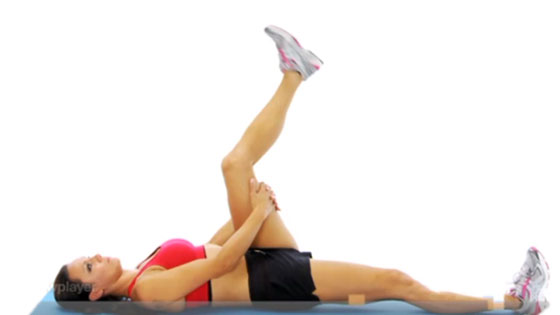
Bent leg hamstring stretch on the back targets the muscle fibres closer to the hip whereas the straight leg hamstring stretch targets the fibres nearer the knee.
- Lie on your back and pull the leg over keeping the knee very slightly bent until a gentle stretch is felt at the back of the leg.
- Again this should not be painful.
- Perform 3 sets of 10 seconds once or twice a day.
Torn PCL exercises – early strengthening
Static quads seated
- Contract the quadriceps muscles and hold for 5 to 10 seconds.
- Relax for about 3 seconds and repeat 10 to 20 times.
- Place the fingers on the muscle towards the inside of the leg above the knee (vastus medialis muscle).
- It is important that this muscle is developed and this one should be felt contracting whilst performing the exercises.
- This exercise can also be done in a standing position.
Isometric hamstring contractions for PCL rehabilitation
- Lie on your front in the prone position.
- A partner or therapist provides resistance as you contract the hamstring muscles, hold for 3 or 4 seconds then relax.
- Change the amount your knee is bent to work the muscle at different lengths.
- Once a range of angles has been worked repeat the exercises with your foot turned outwards and again with your foot turned inwards.
- This exercise targets the inner and outer hamstring muscles at varying angles of flexion or knee bend.
Torn PCL exercises – late-stage strengthening
Calf raises
- Simply raising up and down on the toes, keeping the legs straight.
- Aim for 3 sets of 10 to 20 repetitions daily.
- This exercise can be progressed later in the rehabilitation process by doing single leg calf raises and then single leg calf raises without leaning against a wall or holding onto anything.
Hamstring curls
- These can be done initially against a wall with no weight, using a rehabilitation band, and eventually with a specialist weights machine.
- Curl up against resistance and down again in one smooth movement.
- Aim for 3 sets of 10 to 20 repetitions.
- As strength increases and resistance increases then more recovery time may be required between sessions.
Quarter squats
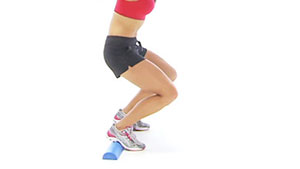
- Squat down to about a quarter of the way down and return to the starting position.
- Aim for 3 sets of 10 to 20 repetitions.
- Progress this by going down to halfway (Phase 3 of rehabilitation) and then full squats (to horizontal) in the sports-specific stages.
- Increase the intensity by adding weight.
- Ensure stomach muscles are kept firm when performing squats.
Lunge
- Standing one leg in front of the other.
- Bend the front leg to lean forwards and return to standing.
- Aim for 3 sets of 10 to 20 repetitions.
- Increase intensity by adding weight.
- Ensure stomach muscles are kept firm when performing this exercise.
Heel drops
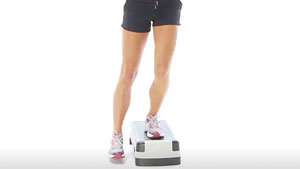
- Standing on a step or similar of up to 6 inches in height, bend one leg so the heel of the other almost touches the floor and return to starting position.
- Repeat until the muscles feel tired.
